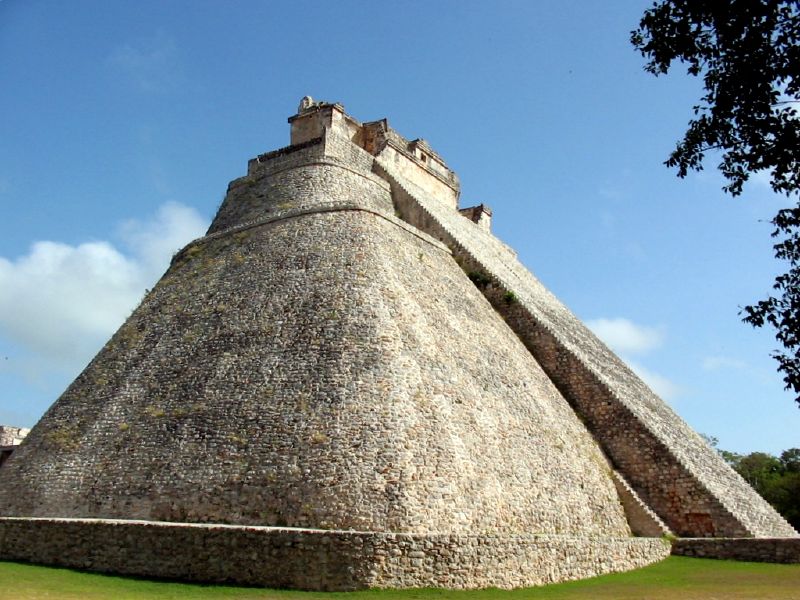Uxmal (Óoxmáal) is an ancient Maya city of the classical period in present-day Mexico.
Uxmal name seems to derive from Oxmal, meaning “three times built“, but possible source of the name is ‘Uchmal‘ which means “what is to come, the future.”
This was supposed to be an ‘invisible city‘ built in one night by the magic of the dwarf king.
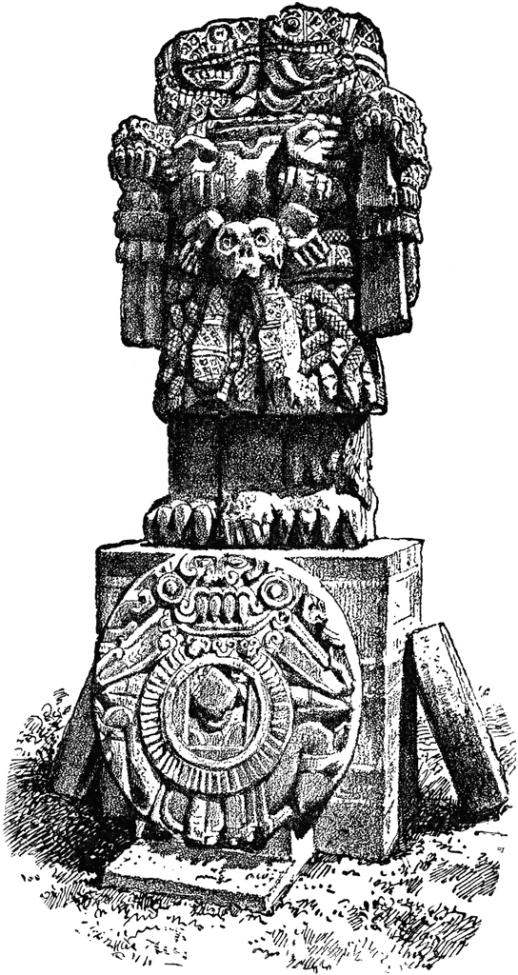
Pandava’s city of Indraprastha in the Mahabharata was built by an ‘asura‘ called Maya.
These asuras and nagas were tribes from India who spread themselves across the globe almost 5000 years ago.
India has the reputation to be the land of gods but Mexico, Guatemala, Peru, Bolivia and Honduras had more gods and richer temples than we had in India at any time.
Siva, Ganesha, Indra, Sun, Hanuman, Vishnu and his tortoise incarnation (Kurma Avatar) were some of the Hindu gods worshipped in central and South America.
The elephant faced god (with four tusks), elephant legs etc is Aztec representation of Ganesha in Mexico.
Uxmal temple is the biggest Siva temple built in mexico and has entwined snakes and, in many cases two-headed snakes are used for masks of the rain god, Chaac; its big noses represent the rays of the storms.
Feathered serpents with open fangs are shown leaving from the same human beings. Also seen in some cities are the influences of the Nahua, who followed the cult of Quetzalcoatl and Tlaloc.
This temple was built in the 15th century and had 3000 Deva-Dasis to perform religious ceremonials. The Mexican temple had the Gopuram style. It was destroyed by the Spaniards. The temples at Tikal in Mexico also bore the imprint of famous Meenakshi temple at Madurai.
![]()
Maya chronicles say that Uxmal was founded about 500 A.D. by Hun Uitzil Chac Tutul Xiu. For generations Uxmal was ruled over by the Xiu family. It was the most powerful site in western Yucatán, and for a while, in alliance with Chichen Itza, dominated all of the northern Maya area. Sometime after about 1200, no new major construction seems to have been made at Uxmal, possibly related to the fall of Uxmal’s ally Chichen Itza and the shift of power in Yucatán to Mayapan. The Xiu moved their capital to Maní, and the population of Uxmal declined.
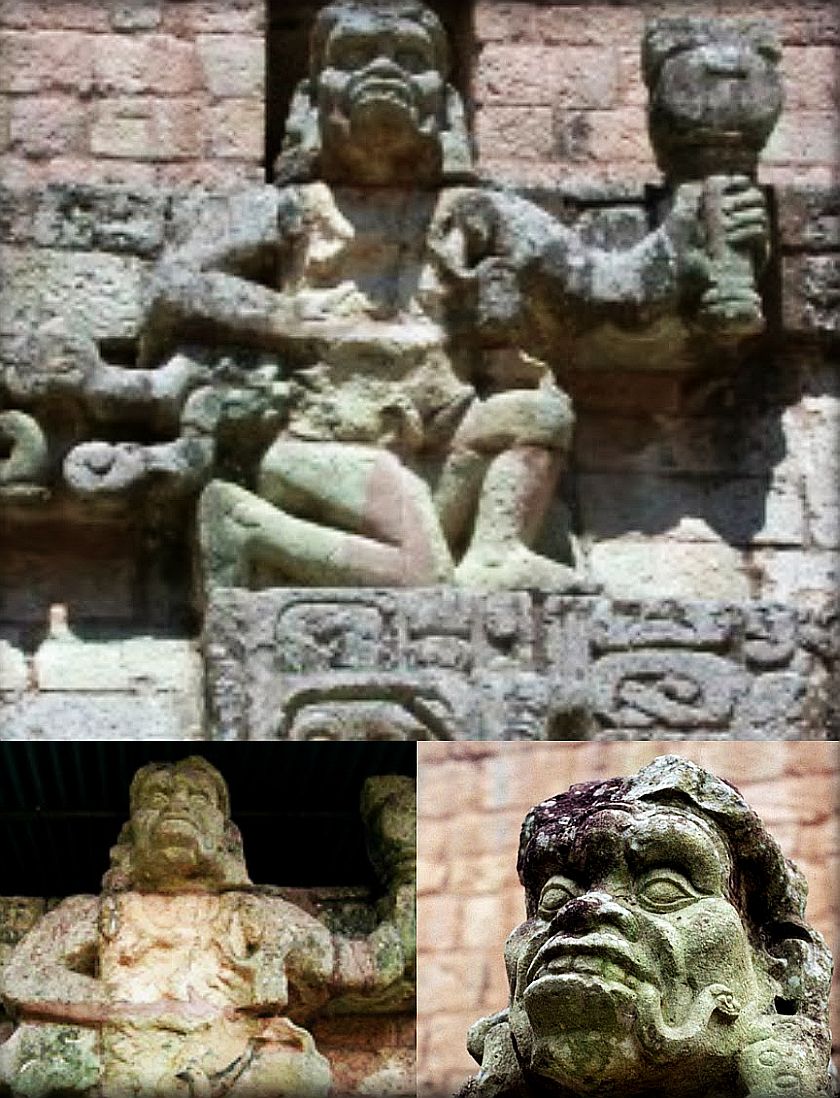
Uxmal was dominant from 875 to 900 CE. The site appears to have been the capital of a regional state in the Puuc region from 850-950 CE. The Maya dynasty expanded their dominion over their neighbors. This prominence did not last long, as the population dispersed around 1000 CE.
After the Spanish conquest of Yucatán (in which the Xiu allied with the Spanish), early colonial documents suggest that Uxmal was still an inhabited place of some importance into the 1550s. As the Spanish did not build a town here, Uxmal was soon after largely abandoned.
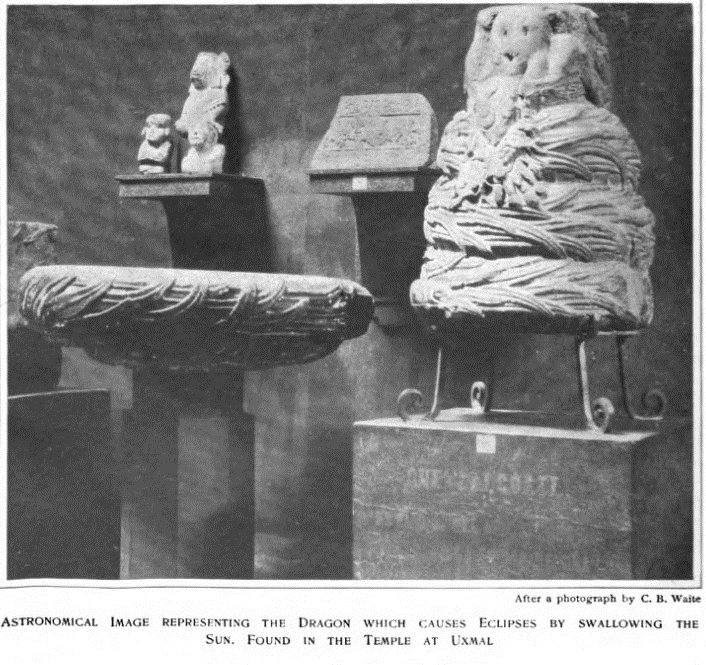
The above is image of asura (Rahu) swallowing Sun to cause solar eclipse.
Puranas described moon’s nodes (shadows) as Rahu and Ketu who are Asuras and have the capacity to swallow Sun and Moon to cause Solar, Lunar eclipses respectively.
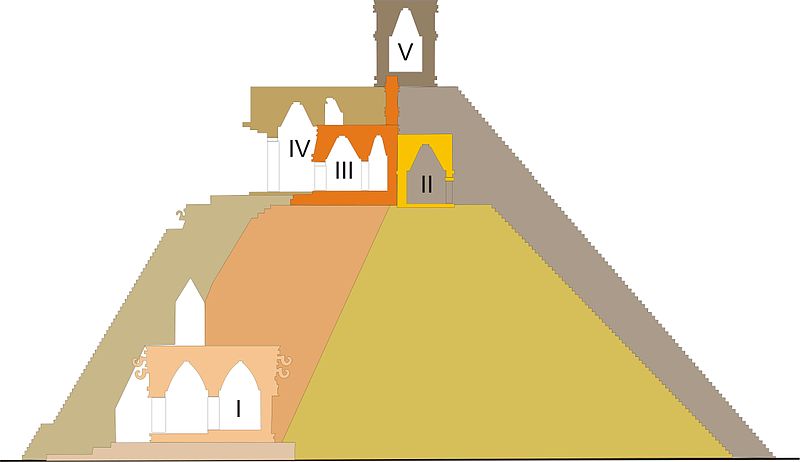
The Adivino (a.k.a. the Pyramid of the Magician or the Pyramid of the Dwarf), is a stepped pyramid structure, unusual among Maya structures in that its layers’ outlines are oval or elliptical in shape, instead of the more common rectilinear plan.
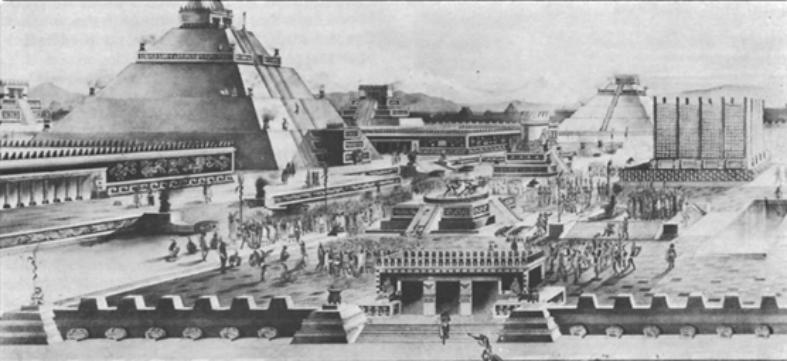
It was a common practice in Mesoamerica to build new temple pyramids atop older ones, but here a newer pyramid was built centered slightly to the east of the older pyramid, so that on the west side the temple atop the old pyramid is preserved, with the newer temple above it. In addition, the western staircase of the pyramid is situated so that it faces the setting sun on the summer solstice.
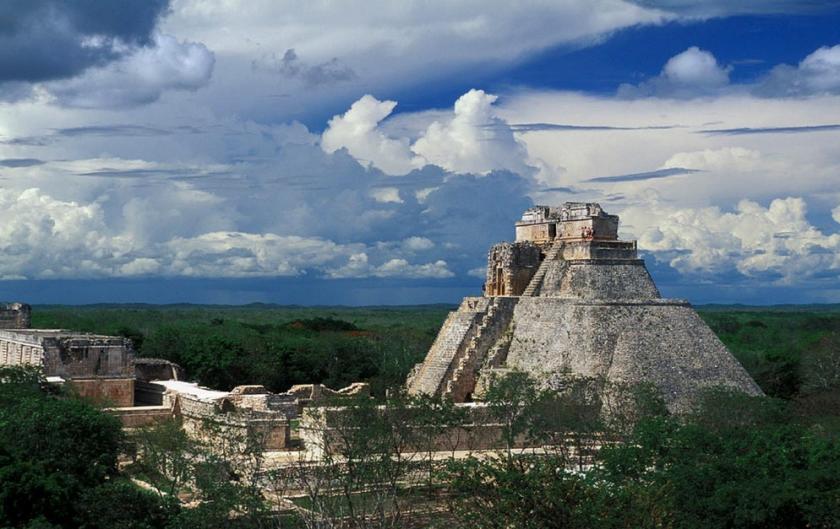
The structure is featured in one of the best-known tales of Yucatec Maya folklore, “el enano del Uxmal” (the dwarf of Uxmal), which is also the basis for the structure’s common name. Multiple versions of this tale are recorded. It was popularised after one of these was recounted by John Lloyd Stephens in his influential 1841 book, Incidents of Travel in Central America, Chiapas, and Yucatan. According to Stephens’ version, the pyramid was magically built overnight during a series of challenges issued to a dwarf by the gobernador (ruler or king) of Uxmal. The dwarf’s mother (a bruja, or witch) arranged the trial of strength and magic to compete against the king.
